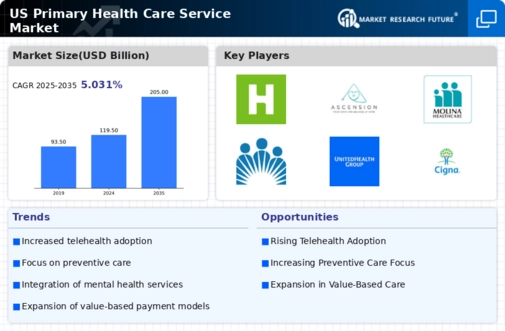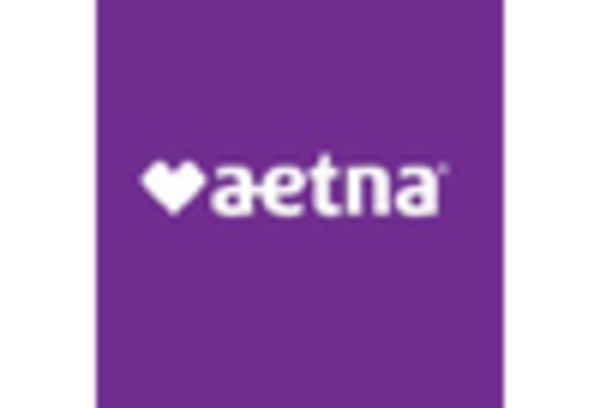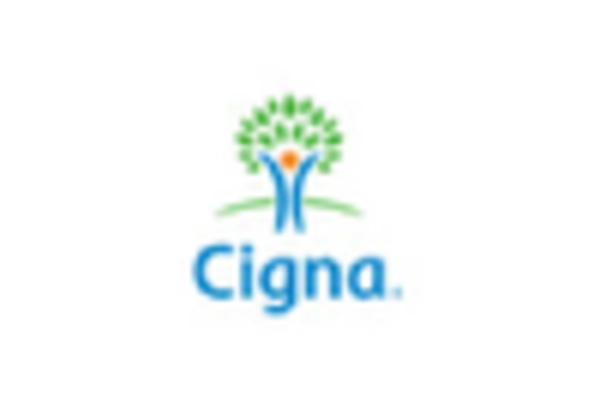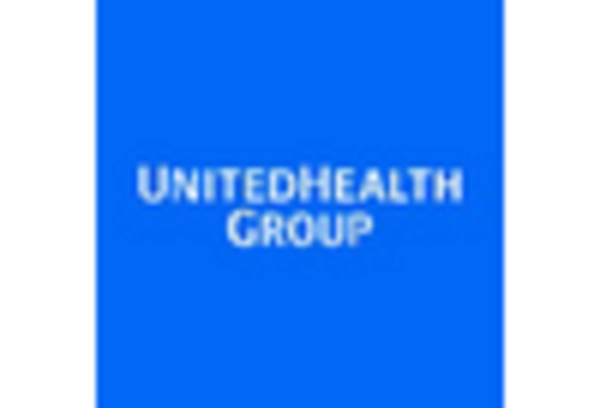Rising Healthcare Costs
The escalating costs associated with healthcare services are a significant driver in the primary health-care-service market. In recent years, healthcare spending in the United States has consistently outpaced inflation, with total healthcare expenditures reaching approximately $4 trillion in 2024. This trend has prompted both consumers and policymakers to seek more cost-effective solutions, leading to an increased focus on primary care services. By emphasizing preventive care and early intervention, primary health-care services can potentially reduce the overall burden of healthcare costs. Moreover, as patients become more cost-conscious, they are likely to prioritize primary care services that offer value for money, thereby influencing market dynamics. The rising costs of healthcare necessitate a shift towards more sustainable models, which could further bolster the primary health-care-service market.
Aging Population Demographics
The primary health-care-service market is experiencing a notable shift due to the aging population in the United States. As the baby boomer generation continues to age, the demand for primary health-care services is projected to increase significantly. By 2030, it is estimated that approximately 20% of the U.S. population will be 65 years or older, leading to a higher prevalence of chronic conditions that require ongoing management. This demographic trend suggests that healthcare providers will need to adapt their services to cater to the unique needs of older adults, thereby driving growth in the primary health-care-service market. Additionally, the increased utilization of healthcare services by this age group may lead to a rise in healthcare expenditures, further emphasizing the importance of primary care in managing health outcomes.
Increased Focus on Mental Health
The growing awareness and recognition of mental health issues are driving changes in the primary health-care-service market. Mental health has gained prominence as a critical component of overall health, leading to an increased demand for integrated care models that address both physical and mental health needs. Recent surveys indicate that nearly 1 in 5 adults in the U.S. experience mental illness, highlighting the necessity for accessible mental health services within primary care settings. This trend suggests that healthcare providers will need to expand their offerings to include mental health screenings and interventions, thereby enhancing the scope of primary health-care services. The integration of mental health into primary care not only improves patient outcomes but also aligns with the broader movement towards holistic healthcare approaches, which could significantly impact the primary health-care-service market.
Policy Reforms and Regulatory Changes
Ongoing policy reforms and regulatory changes are shaping the landscape of the primary health-care-service market. Recent legislative efforts aimed at expanding access to healthcare, such as the Affordable Care Act, have led to an increase in insured individuals, thereby driving demand for primary care services. Additionally, changes in reimbursement models, such as the shift towards value-based care, are encouraging healthcare providers to focus on quality rather than quantity of services. These reforms are likely to incentivize the delivery of comprehensive primary care, which can improve health outcomes and reduce costs in the long run. As policymakers continue to address healthcare disparities and access issues, the primary health-care-service market is expected to evolve in response to these regulatory changes, potentially leading to increased investment and innovation in the sector.
Technological Advancements in Healthcare
Technological innovations are playing a crucial role in shaping the primary health-care-service market. The integration of advanced medical technologies, such as electronic health records (EHRs), artificial intelligence (AI), and data analytics, is enhancing the efficiency and effectiveness of healthcare delivery. For instance, EHRs facilitate better patient management and communication among healthcare providers, which can lead to improved patient outcomes. Furthermore, the market is witnessing a surge in the adoption of telemedicine solutions, which allow for remote consultations and monitoring. According to recent data, telehealth visits have increased by over 50% in the past year, indicating a shift towards more accessible healthcare options. These technological advancements are likely to streamline operations and improve patient engagement, thereby driving growth in the primary health-care-service market.

















Leave a Comment